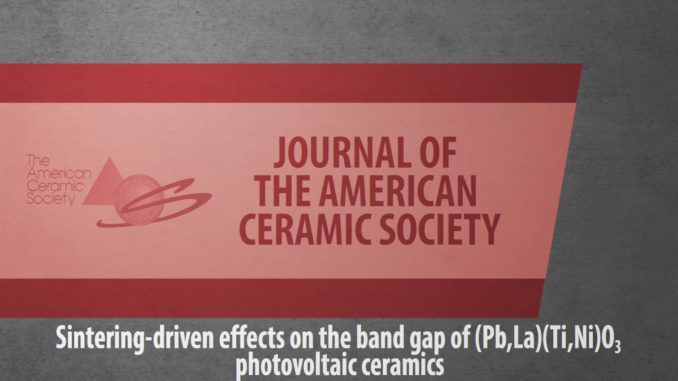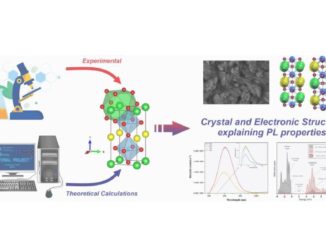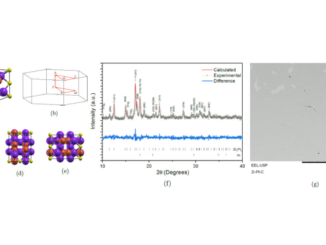
Sintering-driven effects on the band gap of (Pb,La)(Ti,Ni)O3 photovoltaic ceramics
Abstract: In this work, the influence of the sintering temperature on the physical properties of (Pb0.8La0.2)(Ti0.9Ni0.1)O3 (PLT-Ni) ceramics is reported. The experimental data revealed that the energy band gap of PLT-Ni ceramics could be tailored from approximately 2.7 to 2.0 eV by changing the sintering temperature from 1100°C to 1250°C. It is demonstrated that the simple substitution of Ti4+ by Ni2+ cations is effective to decrease the intrinsic band gap while increasing the tetragonality factor and the spontaneous polarization. However, the additional red-shift observed in the absorption edge of the PLT-Ni with increasing the sintering temperature was associated with a continuous increase in the oxygen vacancies (urn:x-wiley:00027820:media:jace17682:jace17682-math-0001) amount. It is believed that the impact of the creation of these thermally induced urn:x-wiley:00027820:media:jace17682:jace17682-math-0002 is manifold. The presence of urn:x-wiley:00027820:media:jace17682:jace17682-math-0003 and Ni2+ ions generate the Ni2+-urn:x-wiley:00027820:media:jace17682:jace17682-math-0004 defect-pairs that promoted both a decrease in the intrinsic band gap and an additional increase of the tetragonality factor, consequently, increasing the spontaneous polarization. The creation of Ni2+-urn:x-wiley:00027820:media:jace17682:jace17682-math-0005 defects also changed the local symmetry of Ni2+ ions from octahedral to a square pyramid, thus lifting the degeneracy of the Ni2+ 3d orbitals. With the increase in the sintering temperature, lower-energy absorbing intraband states were also formed due to an excess of urn:x-wiley:00027820:media:jace17682:jace17682-math-0006, being responsible for an add-on shoulder in the absorption edge, extending the light absorption curve to longer wavelengths and leading to an additional absorption in “all investigated” spectrum as well.
Author(s): Vargas, N. F. C.; Alkathy, M. S.; Eiras, J. A.; Mastelaro, V. R.; Lente, M. H.
Journal of the American Ceramic Society
Published: 07 January 2021
DOI: https://doi.org/10.1111/jace.17682
CDMF
The CDMF, hosted at the Federal University of São Carlos (UFSCar), is one of the Research, Innovation and Dissemination Centers (RIDC) supported by the São Paulo State Research Support Foundation (Fapesp), and also receives investment from the National Council Scientific and Technological Development (CNPq), from the National Institute of Science and Technology of Materials in Nanotechnology (INCTMN).




